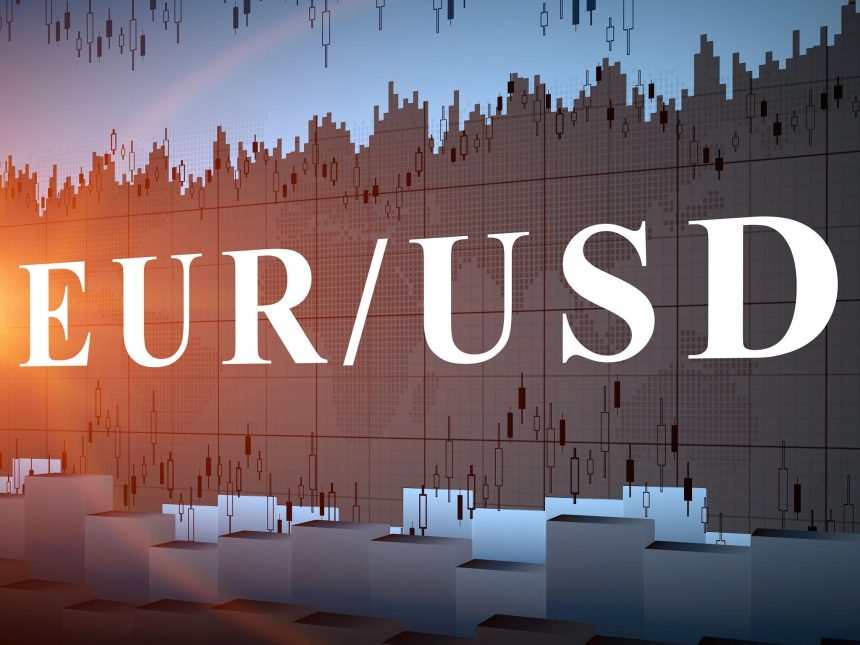EURUSD Surges as US Dollar Drops After Trump’s Tariff Announcement.
EURUSD currency pair has soared to its highest level since October, reaching around 1.1145. The surge comes as the US Dollar (USD) weakens significantly after President Donald Trump announced 20% reciprocal tariffs on the European Union (EU). The US Dollar Index (DXY), which measures the USD against six major currencies, has dropped to 101.30, marking a six-month low.
The recent market movement has been drive by concerns over the impact of these tariffs on the global economy. While Trump’s administration argues that the tariffs will benefit the US in the long run, many experts fear a short-term economic slowdown and potential recession. European Commission (EC) President Ursula von der Leyen has already vowed to retaliate if negotiations with Washington do not yield positive results.
The Impact of Trump’s Tariffs on the US Economy
On Wednesday, US Council of Economic Advisers Chair Stephen Miran acknowledged that the new tariffs could cause short-term disruptions but insisted they would strengthen the US economy over time. However, many analysts are skeptical. The announcement of a 10% baseline duty on all imports, along with additional tariffs on specific countries, has raised fears of a full-scale trade war.
Market participants are concerned that these tariffs will contribute to a global economic slowdown, including in the United States. Many experts believe that the new duties are higher than expected and could trigger a recession. Additionally, there are worries about stagflation—a scenario where inflation remains high while economic growth stagnates. This would complicate the Federal Reserve’s (Fed) efforts to control inflation while maintaining full employment.
The Federal Reserve’s Dilemma
The Fed has been working to keep inflation near its 2% target while ensuring the labor market remains strong. However, the introduction of these tariffs could make this task much more difficult. Higher import costs may push inflation upwards, forcing the Fed to reconsider its monetary policy approach.
Investors are now shifting their attention to upcoming economic data, particularly the US Nonfarm Payrolls (NFP) report for March, which is set to be released on Friday. The data will provide key insights into the state of the labor market and could influence expectations regarding future Fed decisions. On Wednesday, the ADP Employment Change report revealed that the private sector added 155,000 jobs in March—significantly higher than the anticipated 105,000 and the previous month’s 84,000. However, other economic indicators, such as the US ISM Services PMI, have shown signs of weakness. The March Services PMI came in at 50.8, falling short of the expected 53.0 and the previous reading of 53.5.
The EURUSD Strength Amid Trade War Concerns.
The rise in EURUSD is not solely due to the weakness of the USD it is also driven by the strength of the Euro. Despite fears of a trade war, the Euro has performed well, partly due to the European Central Bank’s (ECB) stance on monetary policy.
EC President Ursula von der Leyen has warned that Trump’s tariffs could have dire consequences for millions of people worldwide. She has emphasized that the EU is prepared to respond with countermeasures if negotiations with Washington fail. The European Commission is reportedly finalizing its first package of retaliatory measures, particularly targeting tariffs on steel. Additional measures are being prepared to protect European businesses and interests.
Last month, von der Leyen warned that the EU might impose tariffs on up to 26 billion Euros worth of US imports in response to Trump’s 25% levies on steel and aluminum imports, which took effect on March 12.
Despite these tensions, the ECB remains focused on its monetary policy strategy. ECB officials have dismissed concerns that tariff-driven inflation could delay interest rate cuts. Bank of Greece Governor Yannis Stournaras stated that the planned US tariffs will not hinder the ECB’s expected rate cut in April. He noted that while the tariffs may slightly reduce Eurozone GDP growth by 0.3% to 0.4% in the first year, they will not significantly alter the inflation outlook.
Market Expectations Moving Forward.
Investors are closely watching how the US and EU will handle this developing trade conflict. If negotiations between Washington and Brussels fail, retaliatory measures from both sides could escalate, leading to further uncertainty in global markets. This could continue to put downward pressure on the USD while supporting the EURUSD.
In the short term, traders will focus on the upcoming US economic data, including the NFP report. If the labor market remains strong, it could provide some support for the USD. However, if economic indicators continue to weaken, expectations for Fed rate cuts may increase, further weighing on the Greenback.
Overall, the EURUSD pair is benefiting from the USD’s decline, strong European economic sentiment, and the ECB’s commitment to its policy strategy. However, risks remain high as global trade tensions escalate. Investors should stay alert for further developments in US-EU trade relations and key economic reports in the coming days.









